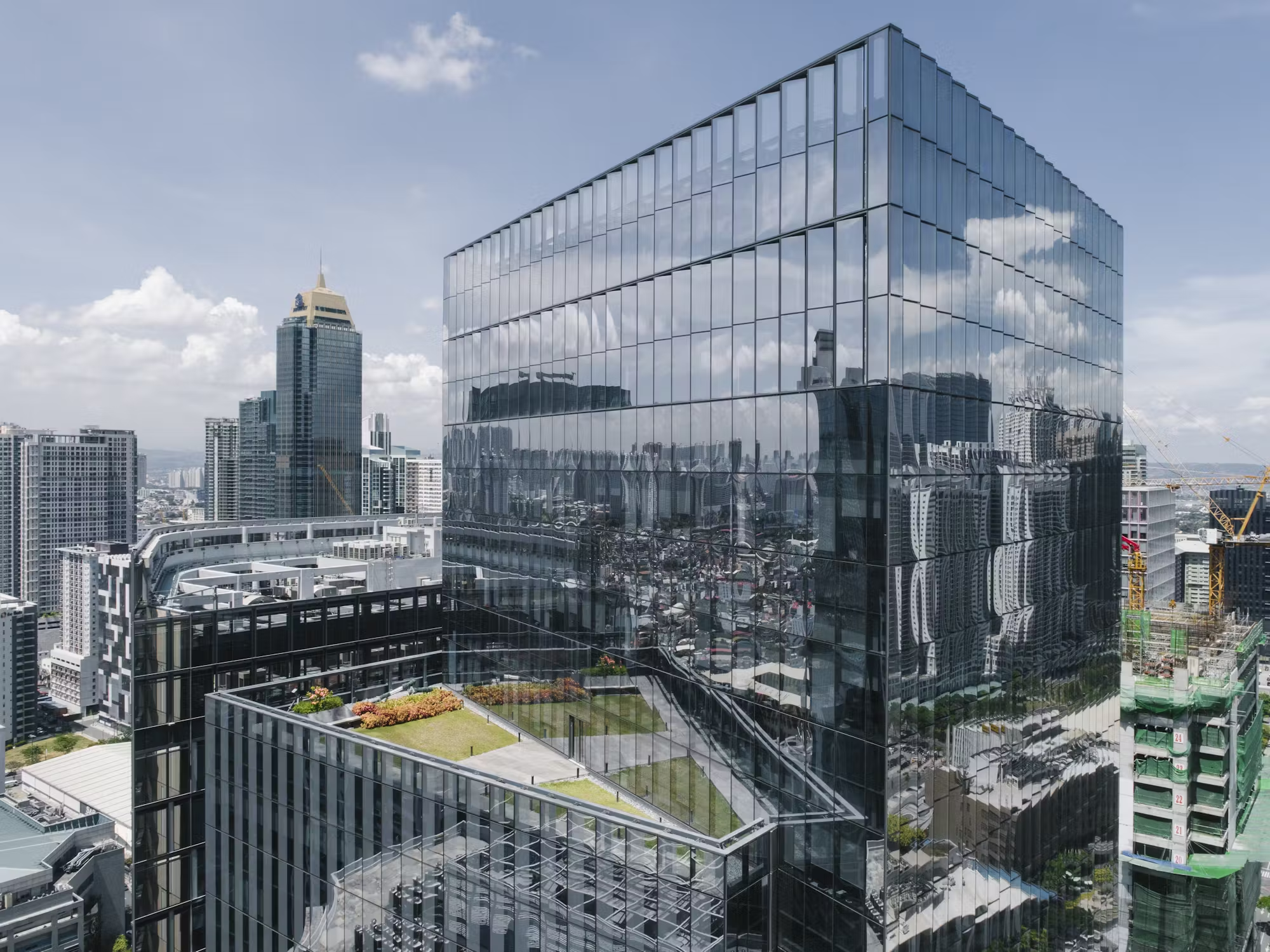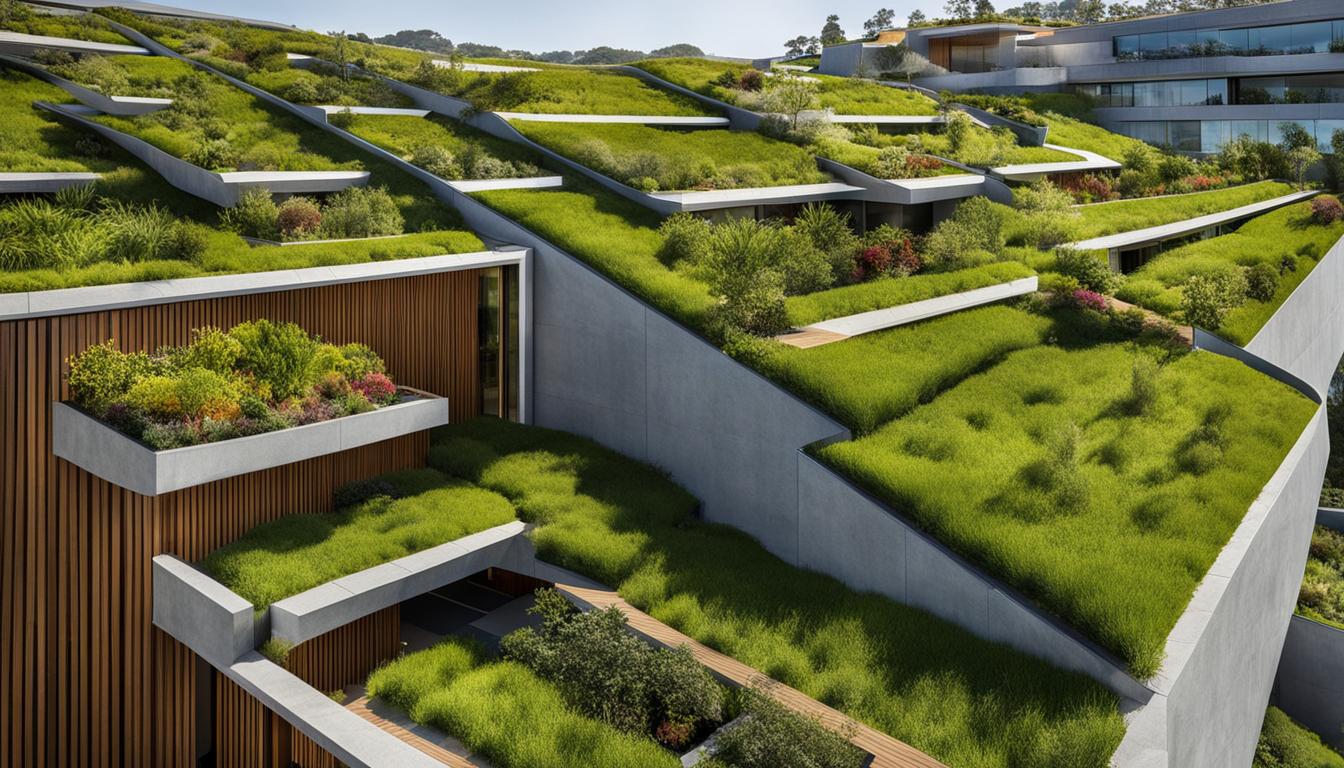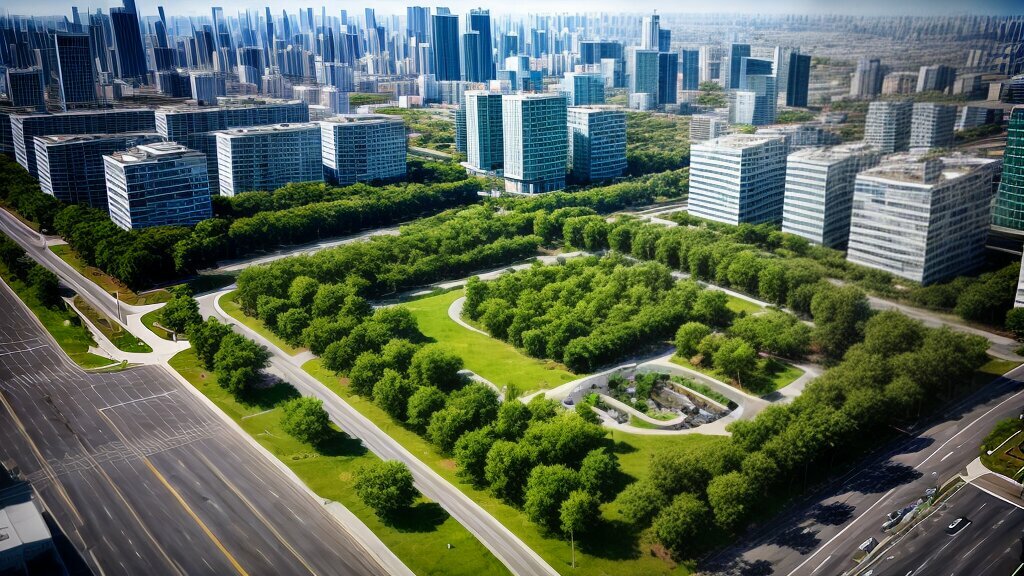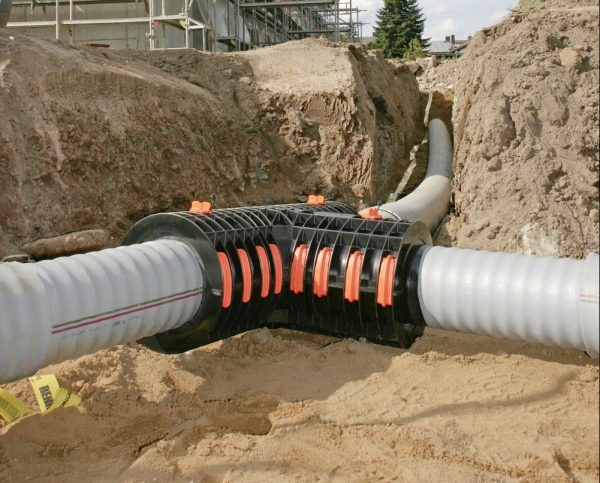Philippines Top Green Buildings
When it comes to sustainable construction and eco-friendly architecture, the Philippines is making significant strides. The country is now home to several top green buildings that prioritise energy efficiency, sustainable design, and green building practices. These buildings have not only transformed the country’s skyline but also set new standards for sustainable infrastructure.
Philippines Green Buildings
One of the key initiatives driving the construction of green buildings in the Philippines is the Philippine Green Building Council (PHILGBC), in partnership with the Department of Energy (DOE). Through initiatives like the Philippine Energy Efficiency Project (PEEP) and the Building for Ecologically Responsive Design (BERDE) programme, these organisations have promoted energy efficiency and sustainability in the construction industry.
These efforts have resulted in the construction of several green buildings in the Philippines that adhere to sustainable practices and have received LEED (Leadership in Energy and Environmental Design) certifications. These certifications recognize buildings that prioritize sustainable site development, water savings, energy efficiency, materials and resource selection, indoor environmental quality, and design innovation. Let’s explore some of the top green buildings in the Philippines.
Key Takeaways:
- The Philippines is home to several top green buildings that prioritise sustainable construction and eco-friendly architecture.
- The Philippine Green Building Council (PHILGBC) and the Department of Energy (DOE) have played a crucial role in promoting energy efficiency and sustainability in the construction industry.
- LEED certifications are awarded to buildings that demonstrate energy efficiency, water savings, and sustainable design.
- Green buildings in the Philippines are setting new standards for sustainable infrastructure and showcasing the feasibility and benefits of green building practices.
- As the country strives to address energy challenges and combat climate change, the importance of sustainable construction practices is growing.
Zuellig Building (Makati)
The Zuellig Building in Makati is an exemplary LEED-certified green building in the Philippines. It has achieved gold and platinum level certifications for its sustainable design and energy-efficient features. The building’s commitment to reducing energy consumption is evident in its innovative systems and technologies.
One of the notable features of the Zuellig Building is its low-emissivity glass system, which effectively reduces solar heat gain while maximising natural light. This feature not only creates a comfortable indoor environment but also helps lower energy use for cooling and lighting purposes. In fact, the building has achieved a 15% reduction in energy consumption.
The Zuellig Building also prioritises water conservation through its rainwater catchment facility. This facility collects rainwater and utilises it for various purposes, such as irrigation and toilet flushing, reducing the building’s reliance on potable water. Additionally, the building implements a centralised paper recycling system, promoting waste management and recycling practices.
Key Features of Zuellig Building:
| Key Feature | Benefits |
|---|---|
| Low-emissivity glass system | Reduces solar heat gain and energy consumption |
| Rainwater catchment facility | Conserves water resources and reduces reliance on potable water |
| Centralised paper recycling system | Promotes waste management and recycling practices |
Robinland Business Centre (Cebu City)
The Robinland Business Centre in Cebu City is an eco-friendly IT building that showcases efficient and sustainable practices in its design and operations. With a focus on energy-efficient lighting, waste management, and water conservation, this building sets a new standard for green architecture in the Philippines.
The building’s design incorporates features that reduce the need for air conditioning, such as a façade that blocks intense sunlight, resulting in lower energy consumption. The use of energy-efficient lighting further contributes to reduced electricity usage, showcasing the building’s commitment to sustainability.
Robinland Business Centre serves as a prime example of how eco-friendly design can be integrated seamlessly into an IT building, without compromising functionality or aesthetics. The building’s thoughtful approach to waste management and water conservation proves that sustainable practices can be implemented in commercial spaces.
In addition to energy-efficient lighting, Robinland Business Centre has implemented a comprehensive waste management system to minimise its environmental impact. This system includes proper waste segregation and disposal practices, encouraging tenants to actively participate in recycling efforts.
The building also features a sewage treatment plant, which treats wastewater for reuse and significantly reduces water consumption. By implementing these sustainable practices, Robinland Business Centre showcases its commitment to environmental stewardship and sets an example for other commercial buildings in the country.
Table: Eco-friendly Features of Robinland Business Centre
| Eco-friendly Feature | Description |
|---|---|
| Energy-efficient lighting | The building is equipped with energy-efficient lighting fixtures, reducing electricity consumption. |
| Waste management system | The building has a comprehensive waste management system that promotes proper waste segregation and recycling. |
| Water conservation | The building incorporates water-saving measures, including a sewage treatment plant for water recycling and reduced water consumption. |

Sun Life Centre (Taguig)
The Sun Life Centre in Taguig is another notable green building in the Philippines. It holds the distinction of being the first building in the country to receive a gold level LEED certification. This certification is a testament to the building’s commitment to sustainable practices and its adherence to strict environmental standards.
The Sun Life Centre incorporates various sustainable design features that contribute to its energy efficiency and overall sustainability. One of these features is the use of double-glazed windows, which provide superior insulation and help reduce energy consumption by minimising heat transfer. These windows help maintain a comfortable indoor temperature while reducing the need for excessive air conditioning or heating.
“Our goal is to create a space that not only benefits our occupants but also minimizes our environmental impact. We are proud to have achieved the gold level LEED certification, which recognizes our commitment to sustainable practices and responsible resource management.” – Building Manager, Sun Life Centre
In addition to energy-efficient design elements, the Sun Life Centre integrates motion sensors throughout the building. These sensors automatically adjust lighting and temperature settings based on occupancy, ensuring that energy is not wasted in unoccupied spaces. This smart system helps optimise energy usage while providing a comfortable and sustainable environment for occupants.
Rainwater Harvesting and Sustainable Practices
The Sun Life Centre also features a rainwater harvesting system, which collects and stores rainwater for various purposes such as landscaping irrigation and toilet flushing. This reduces reliance on municipal water supply and helps conserve water resources, especially during times of drought or water scarcity.
Overall, the Sun Life Centre sets a high standard for green buildings in the Philippines with its gold level LEED certification, energy-efficient design elements, motion sensors, and rainwater harvesting system. It serves as a shining example of sustainable practices and demonstrates the potential for creating environmentally responsible buildings that prioritize both occupant comfort and long-term environmental stewardship.

Asian Development Bank (Mandaluyong)
The Asian Development Bank (ADB) headquarters in Mandaluyong has achieved the prestigious Gold LEED certification, demonstrating its commitment to sustainable practices. The building embodies several environmentally friendly features, including water-efficient landscaping, a rainwater-harvesting facility, and a cooling tower management system. These initiatives contribute to reducing the building’s water consumption and environmental impact.
The ADB headquarters prioritises water efficiency through its landscaping design. By incorporating native plants and efficient irrigation systems, the building minimizes water usage while maintaining an aesthetically pleasing outdoor environment. Additionally, the rainwater-harvesting facility allows for the collection and storage of rainwater, which can be used for landscaping and other non-potable purposes.
Cooling tower management plays a vital role in the energy efficiency of the building. By implementing advanced cooling technologies and optimizing the cooling tower’s operations, the ADB headquarters reduces its overall energy consumption. This not only helps to conserve resources but also lowers the building’s carbon footprint.
| Features | Benefits |
|---|---|
| Water-efficient landscaping | Reduces water consumption and maintains a sustainable outdoor environment. |
| Rainwater-harvesting facility | Collects and utilises rainwater for non-potable purposes, reducing the demand for freshwater. |
| Cooling tower management | Optimises energy use and lowers overall carbon footprint. |
The Asian Development Bank continues to lead by example, showcasing how sustainable practices can be integrated into large-scale buildings like their headquarters. Through their commitment to creating an eco-friendly workplace, they inspire other organizations to follow suit and contribute to a greener future.
ArthaLand Century Pacific Tower (Taguig)

The ArthaLand Century Pacific Tower in Taguig is a prime example of sustainable design and construction in the Philippines. The building has achieved LEED Gold certification for its commitment to environmentally friendly practices and energy efficiency. With its innovative features and green initiatives, the tower sets a benchmark for sustainable architecture in the country.
One of the standout features of the ArthaLand Century Pacific Tower is its green roof. This eco-friendly addition not only enhances the aesthetics of the building but also serves practical purposes. The green roof helps reduce stormwater runoff, provides insulation, and creates a natural habitat for local flora and fauna. It contributes to the building’s overall energy efficiency and supports the surrounding ecosystem.
In addition to the green roof, the ArthaLand Century Pacific Tower utilizes solar panels to generate renewable energy. These panels harness the power of the sun, reducing the building’s reliance on traditional energy sources and minimizing its carbon footprint. By incorporating sustainable design elements like the green roof and solar panels, the tower demonstrates how innovative technologies can be integrated into high-rise buildings to promote a greener future.
| Key Features of ArthaLand Century Pacific Tower | Description |
|---|---|
| Sustainable Design | The building incorporates sustainable design principles, including energy-efficient systems and materials, to minimize environmental impact. |
| Green Roof | The tower features a green roof that provides insulation, reduces stormwater runoff, and supports local biodiversity. |
| Solar Panels | Solar panels are installed to generate renewable energy and reduce reliance on conventional power sources. |
ArthaLand Century Pacific Tower is a testament to the possibilities of sustainable design in high-rise buildings. Its LEED Gold certification, green roof, and utilization of solar panels showcase the building’s commitment to environmental stewardship and energy efficiency. With the implementation of such green initiatives, the tower serves as a model for future developments in the Philippines.

ArthaLand Century Pacific Tower courtesy of their website
8 Campus Place – Building A (Taguig)
Located in Taguig, 8 Campus Place – Building A is a shining example of a LEED Gold certified building in the Philippines. This eco-friendly building showcases a commitment to sustainability and energy-efficient architecture, making it a standout in the industry.
One of the key features of 8 Campus Place – Building A is its focus on water conservation. The building implements efficient plumbing fixtures and non-potable water usage for plant irrigation, reducing water consumption and promoting sustainable practices. By incorporating these measures, the building demonstrates its dedication to environmental stewardship.
In addition to water conservation, 8 Campus Place – Building A prioritises the use of low-VOC (volatile organic compound) materials. These materials emit fewer harmful chemicals, improving indoor air quality and creating a healthier environment for occupants. With its energy-efficient architecture, the building also minimises its environmental impact by reducing energy consumption and carbon emissions.
“8 Campus Place – Building A is a shining example of how sustainable design can be seamlessly integrated into modern buildings. From its water conservation measures to the use of low-VOC materials, this LEED Gold certified building sets a new standard for eco-friendly construction in the Philippines.”
Sustainability Features of 8 Campus Place – Building A
| Feature | Description |
|---|---|
| Water Conservation | Efficient plumbing fixtures and non-potable water usage for plant irrigation |
| Low-VOC Materials | Use of materials that emit fewer harmful chemicals, improving indoor air quality |
| Energy-Efficient Architecture | Minimises energy consumption and carbon emissions |
With its LEED Gold certification and dedication to sustainability, 8 Campus Place – Building A represents a significant step forward in creating a greener and more environmentally conscious Philippines. This building serves as a testament to the possibilities of energy-efficient design and showcases the benefits of incorporating sustainable practices into construction projects.

BTTC Centre (San Juan City)

The BTTC Centre in San Juan City is a prime example of green architecture and sustainable design in the Philippines. It has been awarded a prestigious LEED Gold certification, highlighting its commitment to environmental stewardship and energy efficiency. This iconic building showcases innovative features and practices that contribute to a greener future.
One of the standout features of the BTTC Centre is its power regenerating electrical system. This system harnesses renewable energy sources, such as solar power, to generate electricity for the building’s operations. By utilizing clean energy, the BTTC Centre significantly reduces its carbon footprint and decreases the reliance on traditional power sources.
The water system implemented in the BTTC Centre also demonstrates its dedication to sustainability. The building incorporates rainwater harvesting facilities, which collect and store rainwater for various uses within the premises. Additionally, the BTTC Centre has a state-of-the-art sewage treatment system that ensures the responsible management of wastewater, minimising its impact on the environment.
With its LEED Gold certification and focus on green architecture, the BTTC Centre sets a benchmark for sustainable construction in Greenhills, San Juan. By embracing eco-friendly design principles and implementing innovative technologies, this impressive building demonstrates that it is possible to create structures that are both aesthetically pleasing and environmentally responsible.
Circuit Makati by Ayala Land
- Overview: Circuit Makati is a premier mixed-use development by Ayala Land. It seamlessly combines commercial, residential, and entertainment spaces, all designed with sustainability in mind to minimize its impact on Makati’s urban ecosystem.
- Sustainable Features: The development includes a rainwater harvesting system, green roofs, open spaces that promote biodiversity, and energy-efficient lighting in all public areas.
3. Net Park (Bonifacio Global City)
- Overview: Developed by the Net Group, Net Park is a model of sustainable office buildings in Bonifacio Global City. As a LEED Gold-certified building, it’s designed to prioritize both energy efficiency and the well-being of its occupants.
- Sustainable Features: Equipped with energy-efficient HVAC and lighting systems, motion sensors to reduce energy waste, and a stormwater management system.
5. Menarco Tower (Bonifacio Global City)
- Overview: Menarco Tower stands out for its dual focus on environmental sustainability and occupant health, being both LEED Gold and WELL-certified. The building includes eco-friendly materials and advanced air filtration systems.
- Sustainable Features: Recycled materials, energy-saving mechanical systems, enhanced indoor air quality, and extensive natural lighting throughout the building.
6. De La Salle University – Henry Sy Sr. Hall (Manila)
- Overview: A prime example of green architecture in academia, Henry Sy Sr. Hall is part of De La Salle University’s green campus initiative. The hall’s sustainable design encourages resource conservation while providing a conducive environment for learning.
- Sustainable Features: Solar panels, green roofs, rainwater harvesting, and maximised natural lighting and ventilation.
7. One/NEO Building (Bonifacio Global City)
- Overview: One/NEO represents NEO Property Management’s commitment to sustainable office spaces. This LEED Platinum-certified building minimizes environmental impact while creating green spaces for workers.
- Sustainable Features: Rainwater collection, energy-efficient HVAC and lighting, waste segregation, and landscaped green spaces for occupants.
8. UnionBank Plaza (Pasig City)
- Overview: UnionBank Plaza demonstrates how older buildings can still contribute to sustainability. Although not officially LEED-certified, it has earned local recognition for its eco-friendly efforts.
- Sustainable Features: Heat-reducing facade, energy-efficient lighting, water conservation systems, and eco-friendly waste disposal practices.
9. BTTC Centre (San Juan)
- Overview: BTTC Centre is San Juan’s first LEED-certified building. Its construction emphasizes energy efficiency and resource conservation, setting an example for sustainable commercial spaces in the area.
- Sustainable Features: Rainwater harvesting, waste management, energy-saving lighting, and abundant natural light.
10. Philam Life Center (Cebu City)
Summary Table of Green Features
| Building | Location | Key Green Features |
|---|---|---|
| The Zuellig Building | Makati City | Double-glazed glass facade, advanced HVAC, water recycling, rainwater harvesting, CO₂ monitoring |
| Circuit Makati | Makati City | Rainwater harvesting, green roofs, open spaces for biodiversity, energy-efficient lighting |
| Net Park | Bonifacio Global City | Energy-efficient HVAC and lighting, motion sensors, stormwater management |
| ADB Headquarters | Ortigas, Mandaluyong | Solar panels, water reclamation, energy-efficient chillers, green landscaping, waste management |
| Menarco Tower | Bonifacio Global City | Recycled materials, energy-saving mechanical systems, indoor air quality, natural lighting |
| DLSU Henry Sy Sr. Hall | Manila | Solar panels, green roofs, rainwater harvesting, natural lighting and ventilation |
| One/NEO Building | Bonifacio Global City | Rainwater collection, energy-efficient HVAC and lighting, waste segregation, green spaces |
| UnionBank Plaza | Pasig City | Heat-reducing facade, energy-efficient lighting, water conservation, eco-friendly waste disposal |
| BTTC Centre | San Juan | Rainwater harvesting, waste management, energy-saving lighting, natural light |
| Philam Life Centre | Cebu City | Energy-efficient cooling, water recycling, low-emission materials, large windows for natural lighting |
These buildings reflect the Philippine green building movement’s priorities: reducing energy and water consumption, enhancing indoor environmental quality, and creating healthier spaces for occupants.
Conclusion
Green buildings in the Philippines are revolutionising the construction industry by prioritising sustainability and environmental stewardship. LEED certifications, such as gold and platinum levels, are being awarded to buildings that demonstrate energy efficiency, water conservation, waste management, and sustainable design. These buildings are setting new standards for green architecture and showcasing the feasibility and benefits of sustainable construction practices.
As the country strives to address energy challenges and combat climate change, the importance of net zero and carbon-neutral buildings is growing. These buildings, like ArthaLand Century Pacific Tower and the Zuellig Building, are leading the way in sustainable design and serve as symbols of a brighter and greener future.
With their energy-efficient designs and commitment to sustainability, these green buildings are not just structures, but beacons of hope. They demonstrate that sustainable architecture is not only possible but also essential for a sustainable future. By embracing sustainable practices and obtaining LEED certifications, these buildings are paving the way for a greener and more eco-friendly Philippines.
FAQ
What are LEED and BERDE certifications?
LEED (Leadership in Energy and Environmental Design) and BERDE (Building for Ecologically Responsive Design Excellence) certifications are internationally recognised certifications that validate a building’s sustainability and environmental performance. These certifications assess various aspects of a building, such as energy efficiency, water conservation, waste management, and indoor environmental quality, to ensure it meets strict sustainability criteria.
How many green buildings are there in the Philippines?
There are several green buildings in the Philippines that have received LEED or BERDE certifications. These buildings prioritise sustainable practices and energy-efficient design to minimise their environmental impact and promote sustainability in the construction industry.
What is the Zuellig Building known for?
The Zuellig Building in Makati is a standout green building in the Philippines. It was the first building in the country to achieve a gold level LEED-CS certification, which has since been upgraded to platinum. The building is known for its energy-efficient systems, including a low-emissivity glass system and dimming and HVAC systems that regulate energy consumption. It also features a rainwater catchment facility and a centralised paper recycling system, demonstrating its commitment to water conservation and waste management.
What makes the Robinland Business Centre in Cebu City eco-friendly?
The Robinland Business Centre in Cebu City is the first utility-efficient and eco-friendly IT building in Cebu. It incorporates sustainable design features that reduce the need for air conditioning, such as a façade that lessens intense sunlight. The building also prioritizes energy-efficient lighting and has implemented a waste management system and a sewage treatment plant for water recycling and sanitation.
What distinguishes the Sun Life Centre in Taguig?
The Sun Life Centre in Taguig holds the distinction of being the first building in the Philippines to receive a gold level LEED certification. The building incorporates sustainable design elements such as double-glazed windows, motion sensors for energy regulation, and a rainwater harvesting system. These features contribute to its energy efficiency and overall sustainability.
What are the notable features of the Asian Development Bank headquarters?
The Asian Development Bank (ADB) headquarters in Mandaluyong has achieved a Gold LEED certification. The building prioritizes water efficiency through its landscaping and rainwater-harvesting facilities. It also features a cooling tower management system and utilizes solar panels to meet a portion of its power needs. ADB implements the 3Rs (reduce, reuse, and recycle) as part of its green cleaning program, further demonstrating its commitment to sustainable practices.
What are the key sustainable design elements of the ArthaLand Century Pacific Tower?
The ArthaLand Century Pacific Tower in Taguig is a LEED Gold certified building that showcases sustainable design and features. It incorporates energy-efficient elements such as double-glazed windows and a green roof. The building’s energy needs are partially met through the use of solar panels. It is a leading example of how sustainable design can be integrated into high-rise buildings in the Philippines.
Why is 8 Campus Place – Building A considered a green building?
8 Campus Place – Building A, now named after its main tenant, Wells Fargo, is the first LEED Gold certified building for business process outsourcing companies in the Philippines. It incorporates water conservation measures such as efficient plumbing fixtures and non-potable water usage for plant irrigation. The building also prioritises the use of low-VOC materials and energy-efficient architectural design, reducing its environmental impact.
What are the sustainable practices implemented in BTTC Centre?
The BTTC Centre in San Juan City is the first green building in Greenhills, San Juan, to receive a Gold LEED certification. The building’s design features a double-glazed glass system and an Exterior Insulated Façade System (EIFS) for efficient insulation. It utilises a power regenerating electrical system for its elevators, a water system with rainwater and wastewater treatment facilities, and implements sustainable practices for water conservation and waste management.
How are green buildings revolutionising the construction industry in the Philippines?
Green buildings in the Philippines are revolutionising the construction industry by prioritising sustainability and environmental stewardship. These buildings, with their LEED certifications and energy-efficient designs, are setting new standards for green architecture. They showcase the feasibility and benefits of sustainable construction practices, promoting a greener and more sustainable future for the country.








